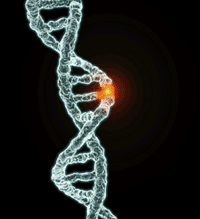Issue #1 - Genetics in Special Education Series

Achondroplasia
What is achondroplasia?
Achondroplasia is a disorder of bone growth. It is the most common form of disproportionate short stature. It occurs in one in every 15,000 to one in 40,000 live births. Achondroplasia is caused by a gene alteration (mutation) in the FGFR3 gene. The FGFR3 gene makes a protein called fibroblast growth factor receptor 3 that is involved in converting cartilage to bone. FGFR3 is the only gene known to be associated with achondroplasia. All people who have only a single copy of the normal FGFR3 gene and a single copy of the FGFR3 gene mutation have achondroplasia.
Most people who have achondroplasia have average-size parents. In this situation, the FGFR3 gene mutation occurs in one parent's egg or sperm cell before conception. Other people with achondroplasia inherit the condition from a parent who has achondroplasia.
To read more - login to NASET or if you are not a member - Join NASET
NASETMembers - Login to access this issue of NASET's Genetics in Special Education Series.